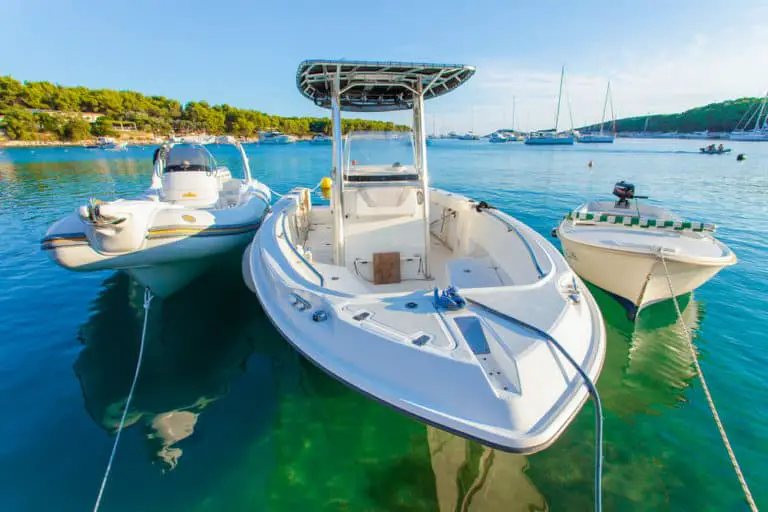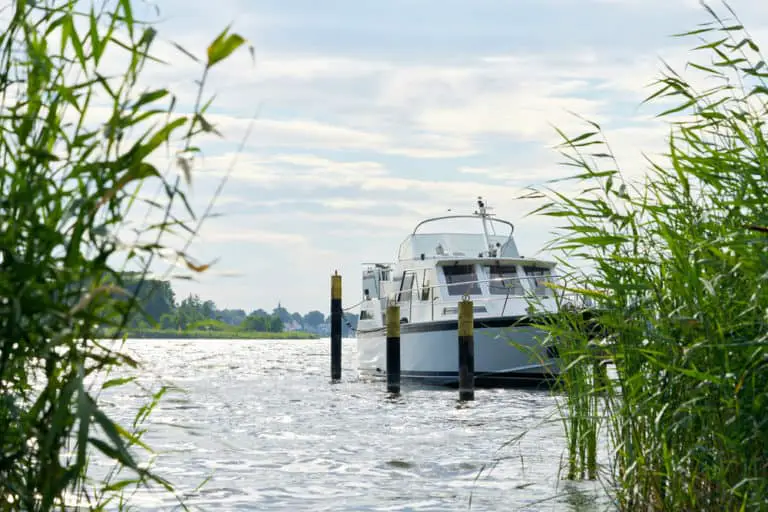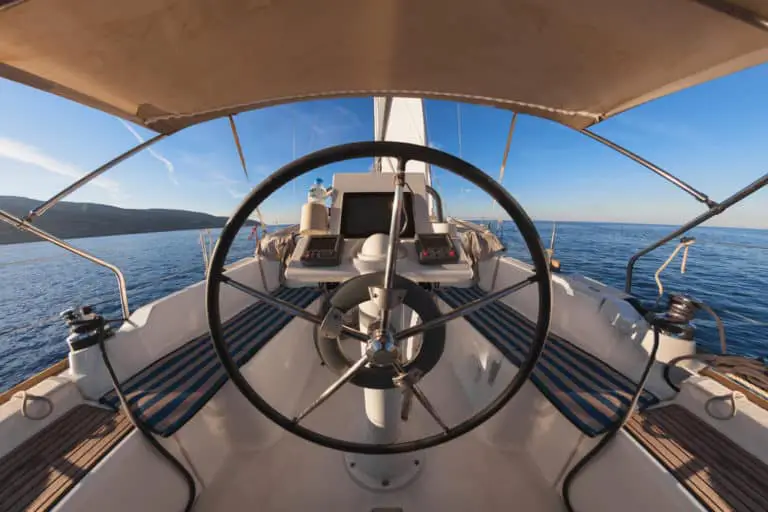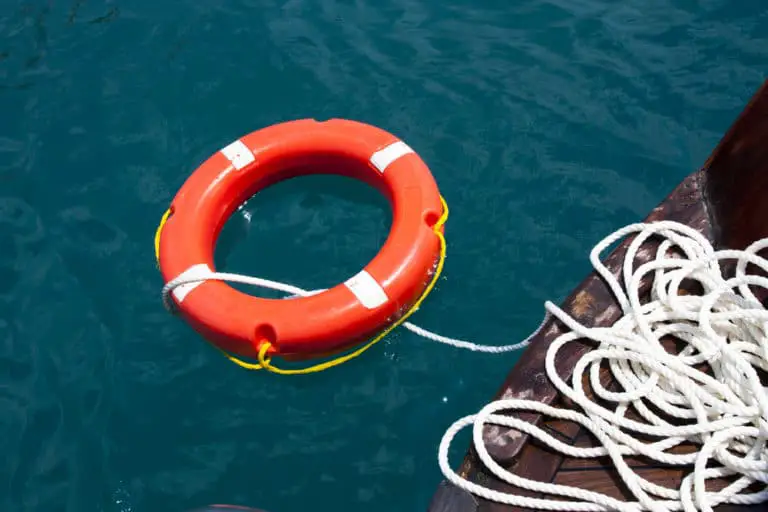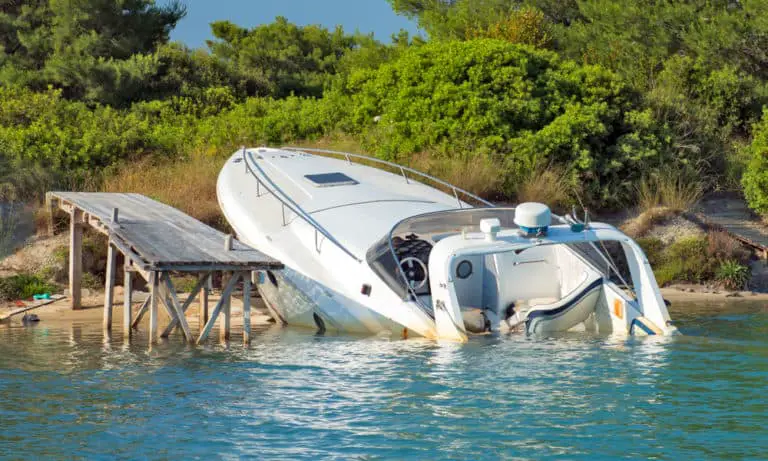Boat Navigation Lights: Everything You NEED to Know (2025)
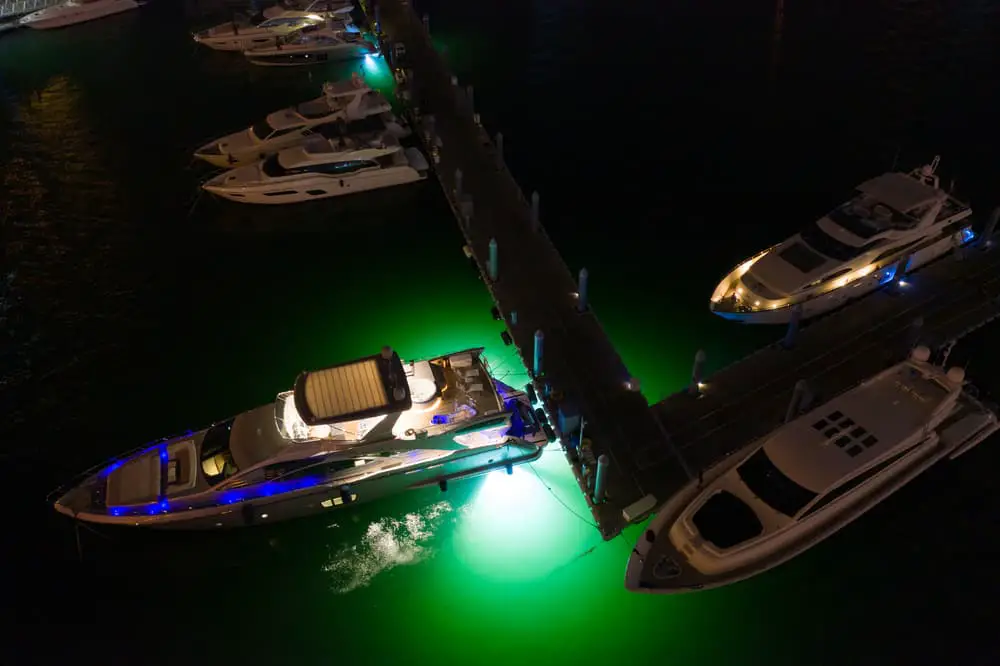
In many cases, boating at night requires the use of boat navigation lights, but boaters often have many questions about them.
They often wonder when they’re needed, what the requirements are for various locations and vessels, and more.
We’re going to do a deep dive into navigation lights for boat to see what you need on your boat, and when you need to use them.
- Legal Requirements
- Types of Navigational Lights
- Which Navigation Lights are Required on My Boat?
- Operators Responsibility
Navigation Lights
On any vessel operating on or in US waters, there is a need for the operator to display navigation lights under certain circumstances. Their purpose is to make vessels aware of each other at night or in times of generally reduced visibility. This is incredibly important during times when you may not be able to see the craft itself.
Other than visibility, marine nav lights also help boat operators determine the size, direction of travel, and even the potential activity of another boat on the water. When an operator understands the type of information each light tells them, they will be better able to determine appropriate courses of action for potential situations.
Boat running lights are divided by location and color, and each of them has specific requirements with how they must be displayed and perceived. You are the one legally responsible for displaying proper nav lights on the boat, for displaying them at the proper times, and for understanding how to read them.
Legal Requirements
The US Coast Guard’s legal navigation light requirements include guidelines for every aspect of light usage.
Their materials start by first defining the standard daily period during which they must be used, then they detail how many of each type of light is needed as well as where they are located. Each light also has constraints regarding its visible distance and the arc over which it can be seen.
In the US, the Coast Guard says that any powered vessel that is under 39.4ft., may operate with boat nav lights in as little as two positions, an all-round light at the stern, and a set of sidelights at the bow.
Vessels that are under 164ft. must have lights displayed in four positions, a stern light, a masthead light, and boat sidelights on both the port and starboard, near the bow.
The ship navigation lights also have minimum visibility distances, depending on the size of the craft. The minimum visibility for nav lights, even for small crafts, is one mile, with requirements that other lights on larger vessels be visible for up to 3 nautical miles.
Also read:
Boating Rules and Etiquette On the Water
Types of Navigational Lights
Boat lights come in 4 types, sidelights, stern light, masthead light, and all-round light. Lights only come in white, red, and green, and all have very specific jobs.
| Color | Position | Visible Range (<12m / 39,4’’) | Visible Range (12m / 39,4’’ =>) | ARC in Degrees | |
| Masthead Light | White | Over fore and aft centerline of the boat | 2 miles | 5 miles | 225 degrees |
| Port Sidelight | Red | On the port side, 22.5 degrees abaft the beam | 1 mile | 2 miles | 112.5 degrees |
| Starboard Sidelight | Green | On the starboard side, 22.5 degrees abaft the beam | 1 mile | 2 miles | 112.5 degrees |
| Sternlight | White | Near as possible to the stern | 2 miles | 2 miles | 135 degrees |
| All-round Light | White, Yellow, Tricolor | N/A | 2 miles | 2 miles | 360 degrees |
| Tricolor Light | Green, Red, White | Over fore and aft centerline of the boat | N/A | N/A | 360 degrees |
| Towing Light | Two White Vertical, Three White Vertical | Over fore and aft centerline of the boat | 2 miles | 2 miles | 135 degrees |
| Law Enforcement Light | Flashing Blue | Anywhere not interfering with other lights | 2 miles | N/A | 180-225 degrees |
Masthead Light
The masthead light is the white light located about ⅔ of the way up the mast, rather than at the top as you’d think. This boat bow light is required when using motor power at night. To be acceptable, the light must have an arc of 225° and needs to be seen from 2 miles away.
Large boats can have up to 3 mast lights. If your boat is shorter than 39 ft., all 2-3 white mast lights can be combined, utilizing one larger white light at the top of the mast.
Color: White
ARC: 225 degrees
Position: Front of boat
Port Sidelight
The boating lights located on the port side of the watercraft are red and mounted so that boats can see as they approach either head-on or from the left. This light helps tell if a boat is coming towards you or if it is pointing away. The phrase “red, right, returning” means that if you see a boat with their red navigation light on the right, they are facing your boat. The only time it is not needed is when your boat is anchored for the night.
Color: Red
ARC: 122.5 degrees
Position: Forward, left side
Starboard Sidelight
If you are to approach a boat from the front or right, you will see the green starboard sidelight. With an ARC of 122.5 degrees, approaching boats will be able to see yours easily.
This light helps tell you whether or not you have the right of way, which is important when it comes to keeping both you and your passengers safe. These are some of the front boat lights.
This light will often be combined with the port light, in small boat navigation lights. When out in the water, if you see the green light, that means it is safe for you to go, as you have the right of way.
Color: Green
ARC: 122.5 degrees
Position: Forward, right side.
Sternlight
The rear boat light is called the stern light. It is used to mark the rear of the boat. The operator can infer from only setting a boat stern light, that they are directly behind the vessel.
The stern light is white and is visible for an arc of 112.5 degrees on both the port and starboard sides, making a full arc of 225. Being able to see the red starboard side light as well as the stern light, should indicate the other vessel is traveling to the right from the perspective of the observer.
Color: White
ARC: 225 degrees
Position: Stern
All-Around Light
One of the boat night lights that is required when on your boat between sunset and sunrise is the all-around light. This light is intended to be seen from any point and helps to tell what direction a boat is moving. This light is also used when a boat is stopped or anchored.
This anchor light is required to have an ARC of 360 degrees and should be visible for two miles. The all-around light is white and it is located at the top of your boat’s mast for maximum visibility.
Color: White
ARC: 360 degrees
Position: Top of mast
Tricolor Light
A tricolor light is a sailboat mast light that has your three types of bow light in one convenient piece of equipment. They are for sailboats that are smaller than 65.6 feet long. The point of this sailboat light is to increase your nighttime visibility. They are mounted at the top of the mast, allowing larger boats to see yours better. They are not permitted to be used by any boats with a motor. The only type of boat that can utilize a tricolor light is a sailboat.
Color: White, red, green
ARC: 360 degrees
Position: Top of mast
Towing Light
These yellow lights are important, as they indicate to other watercraft that, not only is there another boat nearby but that they are also towing someone as well. The light must be positioned at the back of the boat, as close to the stern as possible. The goal is to avoid having anyone run into the boat that is being towed, as there may be no lights showing where that boat is located. The boat lighting requirements when towing state that both sidelights, a stern light, and masthead lights should also be displayed.
Color: Yellow
ARC: 135 degrees
Position: Over fore and aft centerline of the boat
Law Enforcement Light
Lights used by law enforcement on the water are flashing blue lights that can flash 120 times per minute or more. They can be used nearly anywhere that is convenient for the operator, provided they do not interfere with the function of the other lights.
This light may be displayed by any type of local law enforcement that is engaged in the course of their duty. This can apply to local, state, or federal police, as well as officials from wildlife and conservation departments, the Coast Guard, and more.
Color: Flashing Blue
ARC: 180-225 degrees
Position: Anywhere not interfering with other lights
Which Navigation Lights are Required on My Boat?
Find your boat type below for the lineup of nav lights that you will need to safely operate after sunset and in other times of limited visibility.
Be sure you know which lights you will need to have on while underway, as well as at anchor or while towing. If you’re sailing, don’t forget that you are considered power-driven when using your motor.
Powerboat under 23 feet (7m)
Powerboats under 23 feet are required to have the following navigation lights displayed:
- One white masthead light visible for 2 miles
- One red & green sidelight visible for 1 mile
- One stern light visible for 2 miles
- One white, red, green, or yellow all-round light visible for 2 miles
Powerboat Under 39,4 feet (12m)
Powerboats under 39,4 feet are required to follow these boat light rules:
- One white masthead light visible for 2 miles
- One red & green sidelight visible for 1 mile
- One stern light visible for 2 miles
- One all-round light visible for 2 miles
Powerboat Over 39,4 feet (12m)
Powerboats over 39,4 feet are required to have the following navigation lights displayed:
- One white masthead light visible for 5 miles, unless less than 20 meters, then 3 miles
- One red & green sidelight visible for 2 miles
- One stern light visible for 2 miles
- One white, red, green, or yellow all-round light visible for 2 miles
Powerboat 39,4 feet (12m) to 164 feet (50m)
Powerboats between 39,4 feet and 164 feet are required to have the following marine running lights displayed:
- One white masthead light visible for 6 miles
- One red & green sidelight visible for 3 miles
- One stern light visible for 3 miles
- One all-round light visible for 3 miles
Sailboat Under 23 feet (7m)
Sailboats under 23 feet are required to have the following sailing navigation lights displayed:
- Sidelights
- One white stern light
- One white mast lantern positioned at or near the top of the mast where it can be easily seen from a distance
Note: if it is not practicable for the vessel to display the prescribed lights, one all-round white light can be used or a hand torch, with enough time to prevent a collision.
Sailboat Under 65,6 feet (20m)
Sailboats under 65,6 feet are required to have the following sailing lights displayed:
- Sidelights
- One white stern light
- One white mast lantern positioned at or near the top of the mast where it can be easily seen from a distance
Tug Boat With Tow Length Under 656 feet (200m)
Tug boats with tow lengths less than 656 feet are required to have the following navigation lights displayed:
- Two masthead lights in a vertical line
- Sidelights
- Stern light
- Towing light in a vertical line above the stern light
Tug Boat With Tow Length Over 656 feet (200m)
Tug boats with tow lengths longer than 656 feet are required to have the following navigation lights displayed:
- Three masthead lights in a vertical line
- Sidelights
- Stern light
- A towing light placed vertically above the stern light
- A diamond shape visibly displayed
Anchored Vessel
Vessels at anchor or aground are required to observe the following boat lighting rules:
- One white all-round in the fore
- One white all-round at a lower level than the fore, at the stern
If aground, the vessel should display two red all-round lights in a vertical line
Vessel Under Oars
Vessels under oar power have similar requirements to follow as small sailboat lighting:
- Sidelights
- One stern light
Or, alternately, one white all-round light or hand torch to be used to manually signal to avoid collision
Vessel Engaged in Fishing
Vessels actively engaged in fishing are required to have the following marine navigation lights displayed:
- Two all-round lights oriented in a vertical line, red on top and white on the bottom
- One all-round white light for gear more than 150 meters from the vessel
- When making its way through the water, there shall also be sidelights and stern light
Vessel Engaged in Trawling
Vessels engaged in trawling are required to fulfill the following boat light requirements:
- Two all-round lights oriented in a vertical line, green on top and white on the bottom
- One masthead light abaft and higher than the all-round green
- When making its way through the water, there shall also be sidelights and stern light
Kayakers and Canoers
Kayakers and canoers are required to have the following navigation lights displayed:
- One stern light
- Sidelights
Alternatively, a hand torch or lantern which can be used to signal to avoid collisions
Personal Watercraft
There are no established rules for navigation lights on personal watercraft, even though many of them are classified as a boat by coast guard standards. Personal watercraft are often not permitted to operate outside of the sunrise-to-sunset period, and so most manufacturers do not install or make possible the installation of navigation lights.
Vessels Restricted in their Ability to Maneuver
Vessels restricted in their ability to maneuver are required to have the following navigation lights displayed:
- Three all-round lights displayed as high a possible in a vertical line, red at the top, and white in the middle
- One masthead light
- Sidelights
- Stern light
Operators Responsibility
The USCG as well as state authorities hold the operator of the vessel responsible for the correct use and understanding of nav lights.
This means they also must make sure all of the lights used meet the requirements set forth by the authorities.
This also extends to ensuring that the lights are all installed for optimal visibility while underway, so if your cruiser rides high, make sure your lights are still visible.
FAQ
What navigation lights do I need on my boat?
Boat light regulations state boats must have a pair of red and green sidelights, and an all-around white light that can be seen from 360°.
Why are navigation lights red and green?
Navigation lights for boats indicate to others which direction a boat is facing. The red indicates the left side of the boat, green is on the right.
What lights need to be on a boat at night?
Per the navigation lighting rules, it is crucial that you have your red and green navigation lights, as well as the white 360° light.
Which three colors are used for navigational lights?
The boat light colors are going to be green, red, and white. If you see a blue light, this generally indicates a government vessel.
Do I need navigational lights on my boat?
Yes, all boats are legally required to have the minimum red, green, and white boat safety lights
when operating in the dark.
Why do boats have blue lights?
When you see a boat that has blue boat lights at night, that means that it is likely the coast guard or law enforcement.
Why is port red and starboard green?
The light on the starboard side of the boat is green because it is ‘safe’, as the steersman will be able to see other boats.
What does a single white light mean on a boat at night?
If you can only see a single white light on a boat at nighttime, you are likely seeing the stern light or the boat anchor light.

